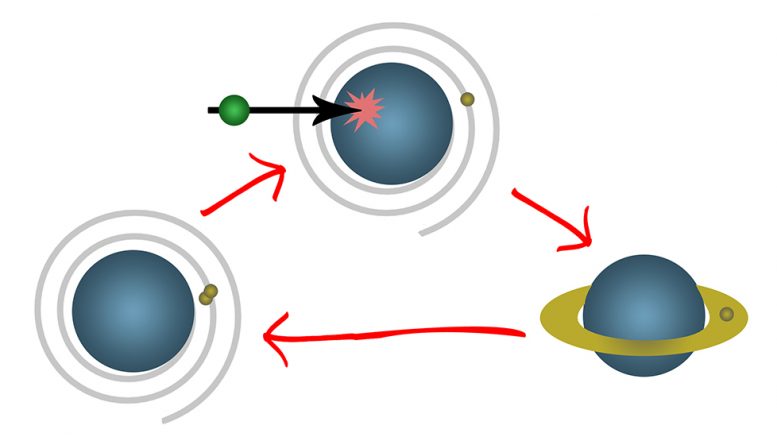Where did the moon come from? According to new research, the moon may have been created by many “mini-moons” crashing together.
The previous belief was that the moon was formed as the result of a singular collision between a Mars-sized asteroid and Earth, which caused debris to enter the Earth’s orbit, which in time coalesced and became the moon we know now.
This new study, which was published in Nature Geoscience, theorizes that the moon we know now is the result of many smaller collisions with asteroids spread out over millions of years. The study utilized computer simulations, which researchers used to examine nearly 1,000 possible scenarios that could result in the creation of the moon. What they found was that it would take approximately 20 small-to-medium sized collisions to gather the debris needed to form the moon.
These collisions would have been with bodies ranging from one tenth to one hundredth the mass of the earth. The debris would then become “moonlets”, or smaller versions of the moon, as they cooled.
The original theory had always come with some controversy, because while in some aspects the idea of a singular crash makes sense – for example, the chemical composition of moon rock is nearly identical to that of Earth rock – but it also leaves unanswered questions. While moon rock is similar to Earth rock, it also has no trace of a second planetary body or of the big asteroid that supposedly collided with Earth. Along with this, small collisions were much more common in the early solar system.
This new theory comes from researcher Ralucu Rufu and professor Oded Aharonson of the Weizmann Institute’s Earth and Planetary Sciences Department in Israel, who argue that the original theory of the moon’s origin requires too-specific conditions, and this new theory gives the moon more time to have formed.
“The new scenario does not require finely-tuned initial conditions, and if the smaller moonlets, as we think, were drawn into the same orbit, they could have merged over millions of years,” writes Ruhu, on the Weizmann Institute’s official website.
The “finely-tuned initial conditions” refer to the fact that for the simple-impact theory to be plausible, it must be assumed that the asteroid was a very specific size, and hit the Earth at a very specific angle.
While the possibility of the moon having a different origin story is interesting , even the scientists involved agree that much more research is needed, especially on the merging process.


